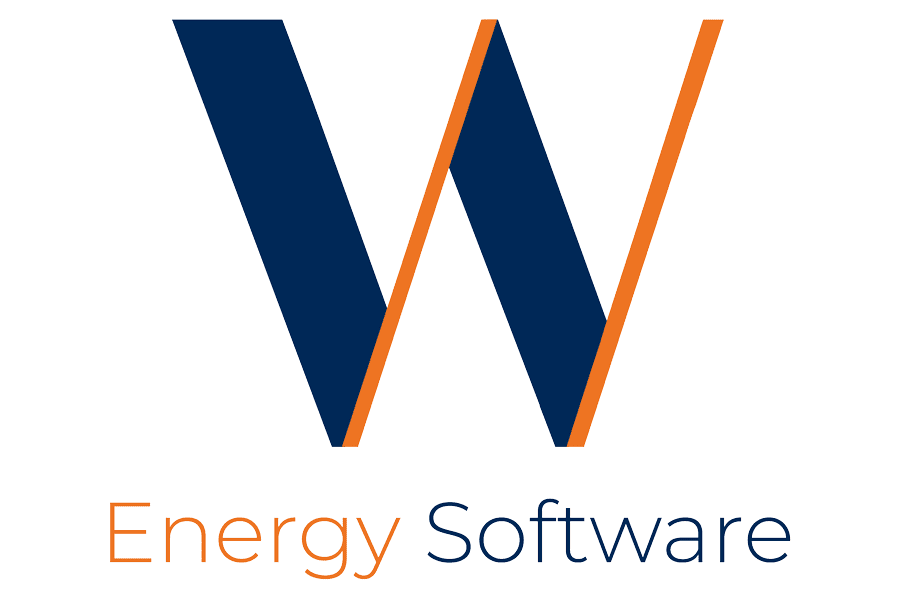Oil and gas producers are under intensifying pressure to drive performance and production to new heights while reducing operating costs and focusing on capital discipline. OILMAN recently sat down with Mark Hill, CRO at W Energy Software, to learn how an operator’s choice of software plays a central role in bolstering business performance with a leaner team and why W Energy Software has seen double digit growth.
Emmanuel Sullivan: Can you provide an overview of your journey through the energy business and what led you to your executive role at W Energy Software?
 Mark Hill: The energy business is something I’ve been proud to be a part of my entire career starting in the early ‘90s. My first job in Houston was putting together gas transit solutions for a number of energy companies, including Shell and Tenneco, then I moved on to energy trading. My perspective has been shaped by spending time on both the vendor and the corporate side of the business. My journey in the energy business spans technology leadership, sales management and senior leadership roles at Dynegy, Divine, Calpine, Allegro Development and P2 Energy Solutions. I’ve spent the better part of my career using technology to improve the business operations of progressive energy companies.
Mark Hill: The energy business is something I’ve been proud to be a part of my entire career starting in the early ‘90s. My first job in Houston was putting together gas transit solutions for a number of energy companies, including Shell and Tenneco, then I moved on to energy trading. My perspective has been shaped by spending time on both the vendor and the corporate side of the business. My journey in the energy business spans technology leadership, sales management and senior leadership roles at Dynegy, Divine, Calpine, Allegro Development and P2 Energy Solutions. I’ve spent the better part of my career using technology to improve the business operations of progressive energy companies.
The oil and gas software market has historically been dominated by players whose business models rely on cobbling together multiple vintages of technology rather than innovating and aligning offerings with what energy professionals are hungry for. You shouldn’t have to pay for expensive upgrades on twenty-year-old software or pay extra to get the personal support users need to operate it, which is what drew me to W Energy Software. Its vision for a unified ERP software suite that empowers all aspects of the energy value chain with one cohesive platform that runs in the Cloud is what the industry has needed, and I am thrilled to be part of the next stage of growth bringing next-generation capabilities to an industry I am passionate about.
ES: Please define what ERP is and the benefits for energy firms?
MH: In the late ‘80s and early ‘90s, the oil and gas business was in transition. At that time, larger operators ran their business on a multitude of point solutions. In other words, a different piece of software for managing the 30 or so unique business processes involved in finding, extracting and accounting for hydrocarbons. The point solutions were either software products or homegrown custom solutions. The problem is that this scattered ecosystem of software wasn’t connected, impeded data transparency and locked up decision-making. Because of this, the majors looked for ways to bring business processes together in one solution so departments could inform executive decisions with operational data.
Many operators turned to enterprise resource planning software, or ERP, bringing scattered business processes and data under one umbrella to better manage supply chains, payroll and other core business functions. As onshore oil and gas grew in complexity, ERP and the practice of managing the energy enterprise in one software package, spread as operators reached for a tool capable of managing construction, asset development and operations across new basins. But ERP software has its roots in manufacturing and commercial spaces, which means that the small handful of “big box” ERPs that oil and gas companies relied on were more suited for managing complex manufacturing and consumer products supply chains versus leases and barrels. What was missing until now is an oil and gas specific ERP, which is where W Energy Software comes into the ERP story. We are the only software provider with a complete solution purpose built on the Cloud covering all the aspects, including upstream accounting, land management and production operations.
ES: W Energy Software describes itself as the only oil and gas ERP. Can you elaborate and explain what sets you apart from other energy software providers?
MH: W Energy Software is the only ERP provider with a comprehensive solution that addresses the full energy value chain, meaning any aspect in which value can be extracted or cost optimized. The way our cloud-based platform evolved made this possible because we started with the end in mind and knew we wanted to build on a single platform. Today, W Energy Software has one solution that encompasses everything involved in managing a commodity and tracking the physical and accounting movement of every molecule from the wellhead to the final point of dispersal and back to an operator’s balance sheet.
I would argue that even the big box ERP providers can’t offer a complete oil and gas solution. There’s simply nothing in the box when it comes to the most important aspects of the business, like managing land, leases and the physical locations where commodities reside. The downside to the big box providers is that operators still need half a dozen solutions to fill the gaps, adding cost, complexity and frustration from having to hold everything together with duct tape and bailing wire.
Of course, there are many oil and gas software providers with broad capabilities in accounting, land or production management. Still, these are point solutions, most of which are built with different technologies at different times by different developers. It’s a nightmare to integrate such systems. There simply are no other oil and gas ERPs out there.
ES: For energy firms considering an ERP implementation, what is the #1 challenge to success?
MH: Getting an ERP right is a different challenge for small and large operators. For smaller oil and gas companies, powering all their business functions in one system injects a level of criticality to the support and reliability of the system. Finding a vendor that can do this at the right level of technology is key to a successful ERP implementation.
For large E&Ps, the big box ERPs continue to weigh them down with millions of dollars required to maintain the level of support and integration they need. That price tag also limits agility and an operator’s ability to adapt, which is critical no matter where the industry is in a cycle. To achieve ERP success, mid-sized and larger oil and gas companies must jettison these costs and embrace the technologies that drive down complexity and lower G&A.
ES: How does W Energy Software help energy firms guard against market cycles and lower costs?
MH: There are two sides to the coin when it comes to helping energy firms maximize market cycles. On one side is cost containment. Our ERP and upstream applications are fully optimized for the Cloud, translating to lower total cost of ownership while also enabling energy teams to contain G&A by doing more with the resources they already have.
On the flip side of the coin is cash flow optimization. W Energy Software’s unified application architecture accelerates the flow of data between departments, which increases operational visibility, maximizes data integrity and puts decision-ready information in front of those who need it, from accounting, land and production teams to the C-suite and boards of directors. Armed with timely, accurate data, energy teams can drop more revenue to the bottom line by precisely tracking every barrel of oil and molecule of gas, optimizing workflows across the energy enterprise.
ES: We’ve seen wide scale digital transformation in the field, but what is holding back the wave of innovation in the back office?
MH: “Don’t fix it, if it isn’t broken” is one dimension as to why the energy back office is stuck in a technology rut. There’s a level of comfort; many energy professionals rely on old software because they may have used it for twenty years or more. But these legacy systems limit visibility into data at a time when the oil and gas workforce needs to upgrade its digital skill set, build smart workflows and bring business information into analytics. We live in a digital era where machine learning and AI can help energy professionals be more successful, but we can’t get there without integration, automation and modern software.
In our digitally connected world, we all expect on-demand access to everything. For the oil and gas industry, the biggest barrier to a connected energy back office is that large and small firms have a very fragile digital infrastructure comprised of hardware, applications and workflows, all held together with brittle integrations.
Despite the promise of the digital oil field, the back office is still relying on spreadsheet solutions. There is real hesitance, even fear, to undergo digital transformation and inject uncertainty for a workforce that has been under pressure for a decade to do more with less while being hit time and again by industry cycles.
There is also a generational dimension. We’ve been talking about the “big crew change” for a decade and that has largely happened in the field, where a new generation of engineers and field staff have digital-first built into their DNA. There remains a cultural gap in the back office and a widening chasm between what is possible with modern technology and the legacy technologies some operators are reluctant to move away from. W Energy Software is simplifying how energy companies cross that technology chasm, which is why we’ve seen double digit growth in the last couple of years.
ES: What’s driving the rush to your ERP and the Cloud?
MH: We are seeing accelerated growth on two fronts. On one front, more and more companies are turning away from big box ERPs, who provide a framework versus out-of-the-box tools, giving operators a million-piece Lego set and requiring a couple of years – at best – to build a working solution. Plus, operators face large gaps in areas like land and field operations while being saddled with massive costs that limit business agility.
On the other front is legacy oil and gas software and vendors who amass a “product soup” of offerings by acquiring disparate software companies. The result is a mishmash of technology, poor or no integration between oil and gas workflows and high cost to energy companies. The industry response has been overwhelming as operators choose W Energy Software’s unified SaaS ERP as a superior replacement to legacy accounting, land and production operations software.
ES: With many oil and gas software providers now offering cloud-based versions of their solutions, what is W Energy Software doing to differentiate and stay competitive?
MH: Most of the oil and gas software out there treats innovation like a project with start and stop, incremental improvement. W Energy Software takes the opposite approach by continuously and relentlessly innovating. We were the first to bring a comprehensive and unified suite of oil and gas workflows to the Cloud, which has positioned W Energy Software to build out additional phases of our roadmap as late comers are just getting started on the Cloud.
W Energy Software is bringing more automation to broader areas of the value chain. We are striving to find new ways to add capabilities to manage, track and analyze every link, including W Energy Software’s advances into measurement data management.
ES: What’s the next big innovation that will impact the oil and gas business?
MH: I see two waves of innovation. First, the journey to higher levels of innovation on the Cloud is continuing. Even as a pioneer and early adopter, W Energy Software has barely scratched the surface of what the Cloud can do.
Because we are leading so many upstream and midstream clients to the Cloud, the next level for W Energy Software is interoperability and the ‘network effect.’ As more oil and gas companies bring their data and workflows into W Energy Software’s ERP, there is an exciting opportunity to blend them in a secure way, whether that’s to exchange partner data and eliminate duplicate effort or to instantly onboard assets for mergers and acquisitions; that’s the power of our unified ERP.
The second wave of innovation that will impact our industry is around the energy transition. This is an opportunity for oil and gas companies to begin thinking less about extracting barrels from the ground and more about producing energy from a mix of options, including hydrocarbons and renewable energy sources like wind and solar. No matter where you are in the energy transition, the business challenges remain the same for land, accounting, field operations and regulatory.
While the skill sets required to manage an oil field or wind farm and distribute payments to royalty owners are very similar, the technology needed to support these workflows must evolve to keep pace with rapid change. As ever, W Energy Software is already at the forefront by providing greater optionality through our energy-focused SaaS ERP and innovating around all the emerging challenges and unique complexities producers face in the energy transition.
Headline photo courtesy of W Energy Software
The CEO of U.S. Energy Media, Emmanuel Sullivan is a technical writer who has built up his profile in the oil and gas industry. He lives and works in Houston, where he publishes Oilman and Oilwoman on a bimonthly basis, and Energies quarterly, distributing the magazine to energy thought leaders and professionals throughout the United States and around the world. At a time when technology is rapidly changing, he provides an invaluable service to oil & gas, and renewable energy executives, engineers, and managers, offering them both broad and specific looks at the topics that affect their livelihoods. Sullivan earned his BA in Communications at Thomas Edison State University and his MA in Professional Writing at Chatham University.





